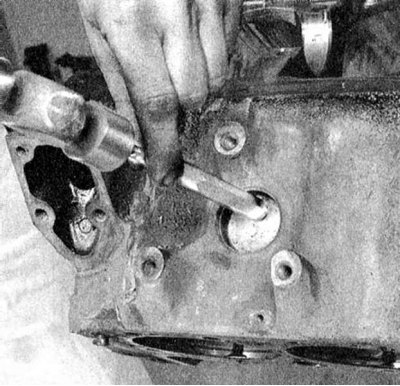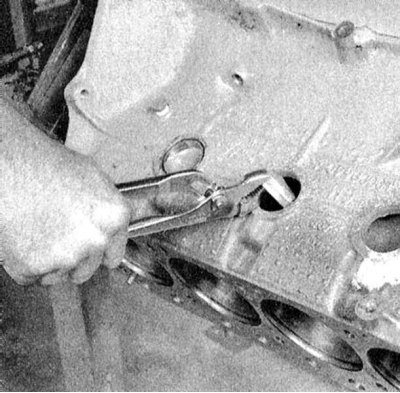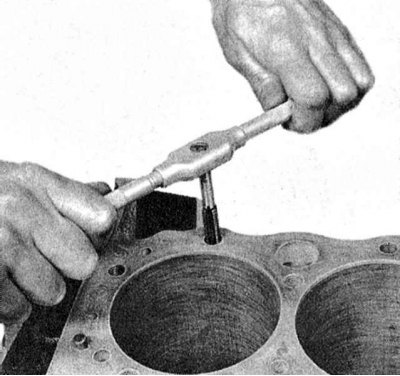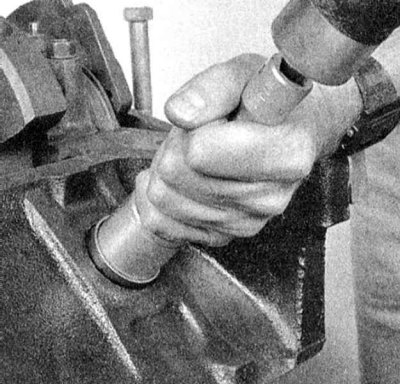 |  |
2. Scrape off all traces of the old gasket material from the mating surface of the block - try not to leave scratches and scuffs.
3. Remove the covers of all main bearings from the block and remove the liners of the latter from their beds. Immediately mark the removed liners with adhesive tape for belonging to your bearing and bed in it (block or cover), then set them aside.
4. Screw in all threaded plugs of the oil galleries. The plugs can be very tight, to the point that they have to be drilled out and then threaded in the block. Plugs must be replaced during reassembly.
5. If the external contamination of the engine is severe, it should be taken to a car service workshop for steam cleaning or heat treatment.
6. After returning the block from the workshop, carefully clean all oil holes and galleries again - special cylindrical brushes of a special shape are produced for this purpose (ask at car accessories stores). Rinse the cavities and channels with warm water, - continue flushing until clean water begins to flow from the opposite side of the block. Dry the block thoroughly, then lightly coat all machined surfaces with light oil to protect them from corrosion. If you have access to a compressed air source, use it to speed up the drying process of the block and blow out hard-to-reach cavities and channels.
Attention! Remember to wear protective goggles when working with compressed air!
7. If the unit is heavily soiled or slagged, brushing with hot soapy water should be resorted to. You should not try to save time by neglecting to thoroughly clean the unit. Regardless of the method chosen, follow the thoroughness of cleaning hard-to-reach cavities, channels and holes. Finally, dry the block and lubricate the machined surfaces with thin oil to protect them from corrosion.

8. Drive all the threaded holes in the block with a tap of the appropriate size to ensure that the torque wrench indicator readings correspond to the actual tightening forces of the fasteners when assembling the engine. If possible, then blow out the tapped holes with compressed air, removing all small debris and chips from them. After finishing the holes, go through the threaded part of the bolts securing the bearing caps and cylinder head with a lerkoy.
9. Reinstall the main bearing caps by finger-tightening their fasteners.

10. Lubricate the sealing surfaces of the new squeeze plugs with Permatex No 1 sealant and install them in their regular places in the block. Make sure that the corks fit perpendicularly - it would be most correct to use a special mandrel, however, it can be replaced by an end head of a suitable size, which should rest only on the inside of the end surface of the cork - not on the collar.
11. Lubricate the threads of the new oil gallery plugs with Permatex No 2 non-hardening sealant (alternatively wrap them with fum tape). Screw the plugs into their regular places and tighten as tightly as possible.
12. If you are not going to assemble the engine right away, place the block in a large plastic bag to protect it from contamination.